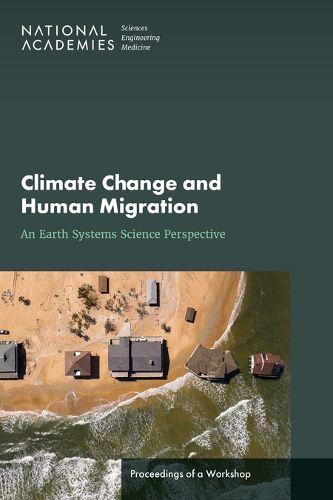Readings Newsletter
Become a Readings Member to make your shopping experience even easier.
Sign in or sign up for free!
You’re not far away from qualifying for FREE standard shipping within Australia
You’ve qualified for FREE standard shipping within Australia
The cart is loading…






Earth systems science aims to discover and integrate knowledge on the structure, nature, and scales of interactions among natural (e.g., physical, chemical, and biological) and social (e.g., cultural, socioeconomic, and geopolitical) processes. Climate-related migration can be temporary or permanent, can involve internal displacement within countries or crossing international borders, and can involve a broad array of other direct and indirect drivers. To explore how an Earth systems science approach may be used to address climate change impacts and the consequent influence on human migration, the National Academies hosted a workshop, Climate Change and Human Migration: An Earth Systems Science Perspective, on March 18-19, 2024. Workshop presentations focused on the data, methods, and research strategies relevant to understanding climate-related migration. This publication summarizes the presentations and discussion of the workshop.
Table of Contents
Front Matter 1 Introduction 2 Overview on Climate Change and Human Migration: Current Status and Research Gaps 3 Mechanisms and Pathways for Modeling the Impacts of Catastrophic Events on Human Migration 4 Mechanisms and Pathways for Modeling the Impacts of Catastrophic Chronic and Slow-Onset Events on Human Migration 5 Transdisciplinary Research and Collaborations 6 Regional Versus Global Perspectives for Modeling Climate ChangeRelated Migration Impacts 7 Advancing an Earth Systems Science Approach to Modeling Climate Migration 8 Closing Reflections References Appendix A: Statement of Task Appendix B: Workshop Agenda Appendix C: Workshop Planning Committee Biographies
$9.00 standard shipping within Australia
FREE standard shipping within Australia for orders over $100.00
Express & International shipping calculated at checkout
Earth systems science aims to discover and integrate knowledge on the structure, nature, and scales of interactions among natural (e.g., physical, chemical, and biological) and social (e.g., cultural, socioeconomic, and geopolitical) processes. Climate-related migration can be temporary or permanent, can involve internal displacement within countries or crossing international borders, and can involve a broad array of other direct and indirect drivers. To explore how an Earth systems science approach may be used to address climate change impacts and the consequent influence on human migration, the National Academies hosted a workshop, Climate Change and Human Migration: An Earth Systems Science Perspective, on March 18-19, 2024. Workshop presentations focused on the data, methods, and research strategies relevant to understanding climate-related migration. This publication summarizes the presentations and discussion of the workshop.
Table of Contents
Front Matter 1 Introduction 2 Overview on Climate Change and Human Migration: Current Status and Research Gaps 3 Mechanisms and Pathways for Modeling the Impacts of Catastrophic Events on Human Migration 4 Mechanisms and Pathways for Modeling the Impacts of Catastrophic Chronic and Slow-Onset Events on Human Migration 5 Transdisciplinary Research and Collaborations 6 Regional Versus Global Perspectives for Modeling Climate ChangeRelated Migration Impacts 7 Advancing an Earth Systems Science Approach to Modeling Climate Migration 8 Closing Reflections References Appendix A: Statement of Task Appendix B: Workshop Agenda Appendix C: Workshop Planning Committee Biographies